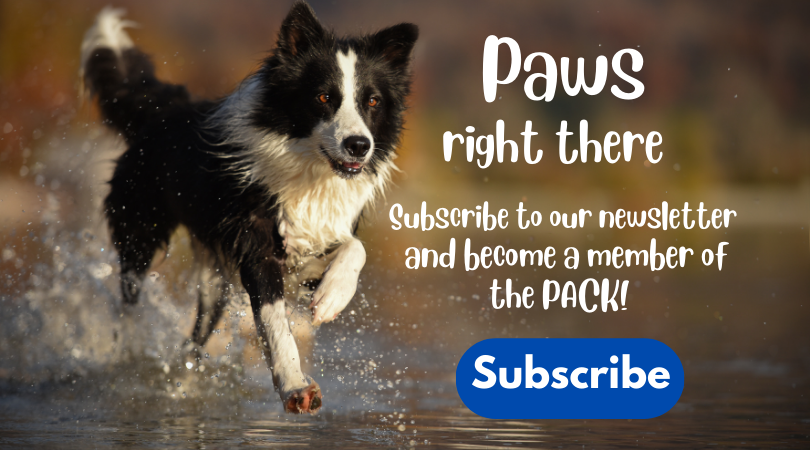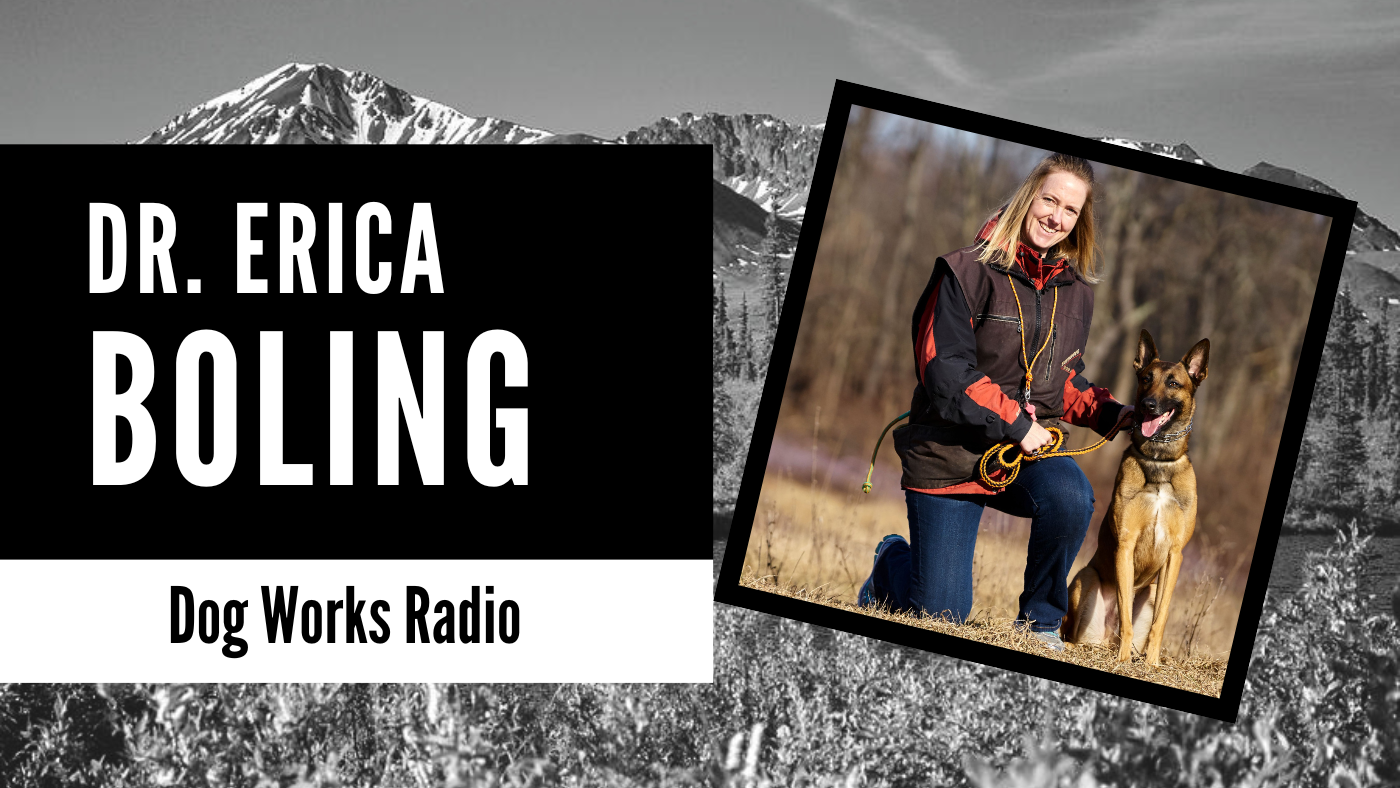Join host Michele Forto as she presents Hiking with your dog
Any seasoned hiker who routinely hits the trail with a canine companion knows having their beloved dog along for the adventure elevates the experience. Enjoying the reward of stunning vistas during a long hike takes on an added measure of joy with your tail-wagging friend by your side. However, backcountry treks with your dog require an added measure of preparation and awareness. Read on for tips to follow before you hit the trailhead and during your hike so you and your furry best pal can make the most of your outing. On today’s show, we are going to talk about how to prepare for hiking with your dog and if you stick around, we will tell you our professional opinion of which breeds of dogs make the best adventure dogs.
What we talk about on this episode:
- Best practices for hiking with your dog
- Should I carry an emergency kit?
- The ratio of dogs to humans on the trail
- Best adventure dog breeds
Hello and welcome to Dog Works Radio. I am Michele Forto and I am the lead trainer of Alaska Dog Works. Here we help owners and dog have better relationships. So… how do you prepare for a hike with your dog?
HOW TO PREPARE FOR A HIKE WITH YOUR DOG
There are several steps to take well before you lace up your hiking boots and attach your dog’s leash. If possible, take a canine first-aid class. It’s unlikely you’ll need to utilize these skills, but you’ll be really glad to have them in an emergency. Also, make sure your dog’s vaccinations are current and he is treated routinely with heartworm and flea/tick preventive before you expose him to the great outdoors.
Other important precautions and preparations:
- Make sure your dog has identification, preferably multiple sources. A properly fitted personalized collar, identification and rabies hanging tags, and a microchip (a small electronic I.D. chip your vet injects subcutaneously) together improve the chances of his safe return if you lose him on the hike.
- If your dog will wear a pack, practice at home first.
- Familiarize yourself with the regulations on the trail you’ll be hiking. Most U.S. National Parks have tight restrictions on where dogs can hike, but some parks are pet-friendly. Most National Forests allow dogs on the trails.
- Investigate how rough the trail is and opt for a shaded trail that’s easy on the paws. Avoid sharp rocks, off-trail routes with steep drops, and hot floor surfaces. Avoid trails with heavy horse or mountain bike traffic. Avoid trails with ladders; never attempt to climb or descend one while carrying your dog.
- Make sure there is a safe water source where you’re going, but also be prepared to treat your dog’s water as well as your own: dogs are as susceptible to Giardiasis and other water-borne diseases as humans.
WHAT TO PACK FOR YOUR HIKE
You’ll need to fine-tune what you pack depending on the length of your hike and whether you’re camping, but the following packing list is a good starting point for a day hike with your best pal:
- A short-to-moderate heeling leash, preferably six feet in length, not to exceed ten feet. Some trails have regulations; check before you go. Avoid retractable leads. Thread your belt through the leash handle for hands-free hiking.
- Consider a harness for a dog who will remain leashed for the entire hike.
- Food, water, and treats. Consider adding Pedialyte to his water to combat dehydration; consult your vet. Give him treats formulated only for dogs.
How much food and water? Pack at least 50% more food than what your dog normally eats, and up to double his normal rations for a strenuous hike. Pack a quart of water for every three miles you plan to hike.
- Dog first-aid kit with accompanying guide. Include a muzzle—an injured dog can become aggressive.
- Dog booties. Sensitive paws may need help navigating a rough trail; booties will also protect your dog’s pads from salted, slippery, or very cold terrain. Be advised that dogs sweat through their feet and can overheat if booties are left on too long.
- Poop bags and a trowel. If you are not burying your dog’s waste according to LNT (Leave No Trace) principles, you’ll need to double-bag it and pack it out with you. Before you go, find out the specific LNT requirements on the trail you plan to hike.
Leave No Trace Rules: Poop happens; you’ll need to deal with it—canine or otherwise—using the proper LNT practices for the trail you’re on. If you’re not packing it out, dig a hole in an inconspicuous space at least 200 feet (70 paces) from water sources, trails, and your campsite. The hole should be 6 to 8 inches deep (4 to 6 inches in a desert environment) and 4 to 6 inches in diameter. After burying the waste, refill the hole with the original dirt and cover it and disguise it with natural materials.
- A dog brush and/or comb, and a tick key. It’s easier to deal with entangled seeds and other plant materials along the way, and to discover ticks before they embed. A tick must attach for 24 to 48 hours to transmit Lyme disease.
- A dog coat or vest for a short-haired indoor breed if you’ll be outside in cold, wet conditions; choose one with belly coverage for hikes in the snow.
- A dog-specific personal flotation device (PFD) if you will be on a lake or river or plan to canoe.
- Insect repellent with DEET. Test with a small dab at home first and look for adverse reactions—drowsiness, lethargy, or nausea. Apply to areas your dog can’t groom off: shoulders, neck, and around the ears, taking care to avoid the ears themselves and the inner ears specifically.
- Bear bells; attach one to his collar and one to your belt or shoes to reduce the chance of a bear encounter.
Hiking with your Dog: Trail Safety and Etiquette
Without rules, anarchy reigns. It takes only a couple of dog-related incidents or expensive rescues to invite more dog restrictions on the trail. Observe a little wisdom and common sense to optimize your outing and keep everybody safe:
- Give your dog an opportunity for water whenever you take a drink, every fifteen minutes to a half-hour, depending on the difficulty of the hike and the temperature. Discourage your dog from drinking stagnant water on the trail and look instead for clear, running water. If your dog drinks saltwater, encourage her to drink plenty of freshwater afterward. Sanitize any water you get along the way with tablets or a portable water treatment system.
- Stay on the trail. Keep your dog on a leash that is ten feet in length or shorter.
1:1 is the best dog-to-human ratio for a hike.
2 is the maximum number of dogs to take on the trail with your group.
3 dogs make a pack and can intimidate other hikers.
- Hikers without dogs have the right-of-way, always. Restrain your dog, step aside, and allow them to pass.
- If your dog is off-leash and another dog is coming, leash your dog. Allow them to sniff briefly and then be on your way.
- If your floppy-eared dog goes for a watery romp or swim, rinse out her ears afterward.
When the adventure ends, give your pooch a final bumper-to-bumper exam and remove any unsavory stowaways on her. Once home, follow up with a thorough shampoo to rid her coat of oils from poisonous plants she may have picked up on the hike.
Then start planning your next big adventure. There is infinite fun to be had on the trail; the more often you take your beloved companion hiking and backpacking with you, the more seasoned and acclimated she’ll become to outdoor adventure. Hike safely with your dog: you’ll rock her world.
Let learn all about the BEST DOGS FOR HIKING: TOP ADVENTURE DOG BREEDS
Tail-wagging, tongue-lolling, bounding down the trail: you’ve seen them—dogs hiking or backpacking with their humans. It’s clear they’re enjoying the journey: the hiking dog is eager, energized, agreeable, as happy about the bugs and the weather as he is the difficult uphill switchbacks. Hiking with friends is fun, but your best, most reliable companion on the trail finally maybe your dog.
Hiking with a dog can enrich the experience for both of you, and for your hiking colleagues, but is best undertaken with a canine who’s got the moxie. It’s wise to leave puppies and senior dogs with compromised health at home. And before you hit the trail with any dog, ask yourself:
- Can he keep up? Engage in a vigorous outdoor play session to see who tires out first. If he did, he probably doesn’t have the endurance needed for a hike.
- Is he obedient? Place him in the company of other dogs —will he still come to you when he is distracted? If not, he’s not ready for the trail, unless you can keep him leashed for the entire hike. Work on obedience with him: a long-distance return and emergency “drop” on command are crucial for backcountry hikes.
- Does he have good hiking genes? With the few notable exceptions below, short-legged dogs should be left at home or only taken along on very easy, short trails. And shorter-snouted dogs—Boxers, Pugs, and French or English Bulldogs, for example—are susceptible to respiratory issues that make long-distance hiking difficult or impossible.
- Does he have a clean bill of health? Make sure your hiking dog has regular checkups and keep his vaccinations and flea and tick preventive medications current.
Most healthy, physically fit dogs can handle a hike through flat terrain that lasts no longer than your longest regular walks at home. But if you really want to hit the backcountry with your best friend along, several breeds stand out as the best hiking dogs. Here we discuss a few of our favorites, along with a few honorable mentions.
THE RHODESIAN RIDGEBACK
So-called because of the characteristic “ridge” of hair running the length of his spine against the direction of the rest of his coat, this dog was bred historically as an African lion hunter. With his low-maintenance short hair and efficient stride, the Rhodesian Ridgeback adapts better to heat than most breeds and as such has no problem hiking in it. As much as he is sinewy and strong, the Rhodesian Ridgeback temperament is also fearless and loyal to a fault: if your backcountry hike will take you well off the beaten path, there is no other dog you’d sooner have by your side—he is hands-down the best protector against outdoor threats. And he has earned the moniker “Navy SEAL of dogs” for good reason: his thick pads can handle the roughest of terrain. Rumor has it the Rhodesian Ridgeback can keep pace with a running horse as far as 30 miles. Among the best outdoor dogs, this intelligent, faithful, hardworking breed makes a superlative hiking partner.
THE VIZSLA
A pointer of Hungarian extraction, the Vizsla is an exceptionally trainable dog. She is a natural runner who excels at speed, strength, endurance, navigating obstacles, and jumping—she is even a strong swimmer. And because of her short coat, she adapts well to hikes in warm to temperate climates. She is a good-natured gal who welcomes a hike of any duration and makes an excellent watchdog, an admirable trait for camping.
THE BERNESE MOUNTAIN DOG
Hardy, affectionate, intelligent, a gentle giant: these are all attributes of the Bernese Mountain dog, an animal who possesses a natural love of the outdoors and who craves an active lifestyle. A working farm dog from the Swiss Alps, he was made for drafting and droving (moving livestock); his German name, Berner Sennenhund, in fact, means “alpine pasture dog.” He can pull ten times his body weight, and because of this mighty work ethic has no difficulty at all packing in supplies for your backcountry adventure.
The Bernese Mountain Dog loves a large “playground” and thus takes a shine to hike. Easily trained and naturally obedient, he’ll stay by your side unleashed. His agility allows him to navigate rocky terrain effortlessly, and his heavy coat makes him an excellent cold-weather hiker.
THE LABRADOR RETRIEVER
We can’t say enough good things about America’s most popular dog, your favorite, and ours. The family choice for thousands and for good reason, the Labrador Retriever loves running and playing and being outdoors in general. She has been described as weatherproof, waterproof, and tenacious—excellent qualities all. The consummate athlete, she is also friendly to a fault and loves to explore. This makes her a delightful hiking partner for you to be sure, but also for others you encounter since they’ll recognize her as a non-threatening, tail-wagging presence on the trail.
Smart, trainable, strong, and hardworking, the Lab will agreeably pack in seven to ten pounds of gear in most climates but does not like extremes. Bring a good stick or a Frisbee to satisfy her voracious appetite for play, and by all means keep her moving—Labs love to eat (she’s not picky, keep an eye on her) and are prone to obesity; give her loads of exercise to help maintain her girlish figure. She also loves to swim and enjoys hikes that extend her this opportunity. You really can’t go wrong hiking with a Lab.
THE PORTUGUESE WATER DOG
This cheerful fellow is a champ: he was made for hard work, herding fish, retrieving lost tackle or broken nets, swimming as a courier between ships or from ship to shore, and in general, shines in the surf—there is not much he hasn’t done. But in spite of his love for the water, he’s at home on terra firma, too. So, if your hiking adventures will take you to the beach or the lake, he’s the top dog. Above all, be prepared for an active lifestyle: the Portuguese Water Dog is adventurous and thrives on daily mental stimulation and physical exercise. Like the Lab, he possesses a friendly demeanor which makes other hikers comfortable around him. But he also loves being within sight of you; this makes him an excellent companion on the trail, ill-suited to leave alone for long periods.
THE SIBERIAN HUSKY & THE ALASKAN MALAMUTE
They are distinct breeds to be sure but share some attributes, notably their propensities as cold-weather traction dogs. The Malamute is the bigger and stronger of the two (weighing between 75 and 85 pounds), comfortable over harsh terrain in cold climates: she can endure temperatures to an impressive 70° below zero. Her massive feet perform like snowshoes, her sharp claws grip the ice. Be advised she rarely barks and thus makes a poor watchdog; she may also exhibit a strong prey drive and a willingness to go after small animals.
Coming from the same genetic stock, the smaller Siberian Husky should not be overlooked as an excellent hiking partner. At 35 to 60 pounds, she’s more compact than her Malamute cousin but as happy in the snow and extreme cold. The Husky is sometimes seen as more social than the Malamute and generally makes a good family pet. She needs loads of exercise and is happy to cover long distances with you on the trail, especially in the cold. She has also earned a reputation as an escape artist with a strong prey drive. And like the Malamute, the Husky makes a poor watchdog: she may howl to identify with her “pack,” but is less willing to alert you to an intruder with her barking.
HONORABLE MENTIONS
- The Australian Shepherd is a plucky, hike-worthy canine. Nicknamed the “ghost-eye dog” because of his distinctive, otherworldly eyes, the Aussie is a herding dog known for his excellent work ethic, impeccable social skills, and protective nature. He’s ideal for an active family and makes a good companion for anybody who enjoys exploring different types of terrain. Steep inclines and long excursions are child’s play for him, and his agility and obedience are unmatched; avoid temperature extremes with this otherwise hardy dog.
- A German Shorthaired Pointer is an affectionate fellow with above-average intelligence. He’s a bit like our beloved Lab, marginally more difficult to train. And like the Lab, he started purely as a hunting dog and evolved into a worthy family pet owing to his winsome personality. He has a strong prey drive and will possibly bolt at the sight of a small animal, but makes a good guard dog, helpful in the wilderness; you will tire on the trail well before he does.
- The Jack Russell Terrier possesses an audacious spirit in a compact package. The Jack Russell has boundless energy and does not tire easily; she’ll stick by your side on the trail and makes an excellent watchdog at your campsite, alerting you to potential intruders.
- The Rat Terrier possesses many of the Jack Russell’s admirable qualities but barks less and is arguably more trainable; do not be surprised if she gifts you with a chipmunk or mouse, as she was made for pest control. If you love hiking but your lifestyle otherwise rules out a larger dog breed, the Jack Russell and the Rat Terrier each make a surprisingly praiseworthy companion animal for outdoor adventuring.
- And don’t forget the mutt! There are plenty of adoptable mixed breed dogs who make excellent hiking buddies. Just make sure your beloved mutt meets the benchmarks above.
Hike well, hike safely, and hike often, and by all means hike with your dog: including him in your backcountry adventures will make both of you experts, sweetening the experience and galvanizing the already-tight bond between you.
It is now time our calendar of events. For those that are listening locally on KVRF or our current and past clients stay tuned for important announcements, for our other listeners, stick around and you might learn something cool.
We are continuing on with
- Beat the Heat Month.
- Dog Training Education Month.
- Spay/Neuter Awareness Month.(Humane Society of the United States)
- Pet Dental Health Month.
- Responsible Pet Owners Month.
- National Prevent a Litter Month.
In early April we will be at the Mat Su Outdoorsman show at the Alaska State Fairgrounds in Palmer for this three-day event. Come out and say hello. We like it when you say hi. We will also have all of our coffee blends on sale, a bunch of gear and you can learn all about our adventure dog club just in time for spring. We are excited about this one. It was canceled last year because of COVID but this year is supposed to be bigger than ever. Not only will we be there but there will be food trucks, live events, demonstrations, and much more. This is the premier event for anyone that is interested in getting outdoors in Alaska.
On April 17 we will be starting our group classes in the park. They will be held at wonderland park in Wasilla at 11:30 am. These are free for our current and past clients and are part of your training package. If you are not a client or just want to check us out, this is a great way. We do have a nominal drop-in fee.
We are gathering gear for our first ever nose work class and treiball and Robert is thinking about doing pack walks again too. If you want to get an idea of what we will be doing, head on over and watch the Pack on Amazon Prime Video. It is a really cool show!
Did you know that every Wednesday and Sunday night we do a Facebook live at 7 pm? Be sure to check us out. If you miss the live broadcasts you can always tune in later too.
We have a special announcement! Our daughter Nicole has joined Alaska Dog Works and she will be offering, among other things day training classes in Anchorage. Much more on that to come. Did you know that Nicole started training dogs at nine years old and one of her first clients was a family with two huge Rotties they said couldn’t walk on a leash!
Also, stay tuned for info about the summer festival, how you can train your dog to run in the Alaska dog works dryland derby this fall, and much more. As always you can keep up to date by following us on our social channels, just search dog works radio and for more training tips and tricks and to learn how to schedule a free discovery call to talk with us about how to make your dog one of the best, visit Alaska dog works.com
One last thing did you know the single best thing you can do is tell your family and friends about our show. Why don’t you send them a link to this episode and they too will soon be a rabid listener?
Host, Michele Forto’s Bio: Michele Forto is the lead trainer for Alaska Dog Works where they train dogs for service work, obedience, and more. Michele is also the business manager and husky wrangler for Team Ineka. When Michele is not training dogs she loves to travel on their annual Rock n Roller Tours where she and Robert hit up rock concerts and roller coasters around the country.
Host, Robert Forto’s Bio: Robert Forto is the training director for Alaska Dog Works where they train dogs for canine obedience, working dogs, therapy dogs, and service dogs for clients all over North America. He is also a dog musher and he and his wife operate a 36-dog mushing kennel in Willow, Alaska, called Team Ineka. They can often be seen at local races and leading expeditions in the Alaska backcountry with outdoor leadership students at the University of Alaska. Robert is the producer of Dog Works Radio that has been on the air since 2009 and is currently simulcast on a local radio station, KVRF in Palmer, Alaska.
Links and Resources Mentioned:
- RSS feed for our show: https://dogworksradio.libsyn.com/rss
- Alaska Dog Works
- First Paw Coffee
- Robert Forto on Twitter: @robertforto
- Dog Works Radio on Twitter: @dogworksradio
- Michele Forto on Twitter: @micheleforto
- Alex Stein on Twitter: @coldfootfilms
- Dog Works Radio on Facebook
- Dog Works Radio on Instagram
- KVRF in Alaska
Thanks for Listening! We appreciate your visiting our site today and for help in bringing awareness to the Dog Works Radio podcast
Where we are going? (In real life)
- Rock n Roller Coaster Tour 21 #rocknroller21 to live host The Coaster Geeks Podcast
- Podcast Movement 21 in Nashville in August #PM21
Audience feedback drives the show. We would love for you to email us and keep the conversation going! Email live@dogworksradio.com or call us at 907-841-1686
-
- We would love to hear from you!
Help us spread the word! We would love it if you could please share #DogPod with your Twitter followers. Click here to post a tweet If you dig this episode head over to Apple Podcasts and kindly leave us a rating or a review and subscribe!
Ways to subscribe to Dog Works Radio
Feedback and Promotion You can ask your questions, make comments, and request a show topic! Let your voice be heard.
-
- Email live@dogworksradio.com
- Book an interview on the show
- Take the Survey



















